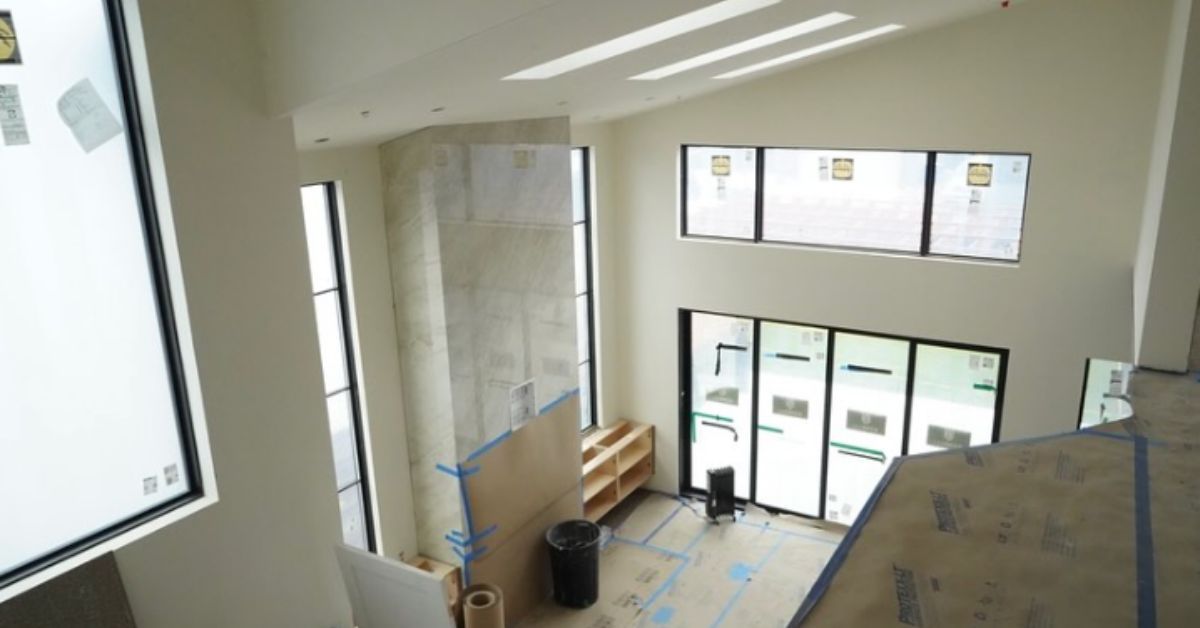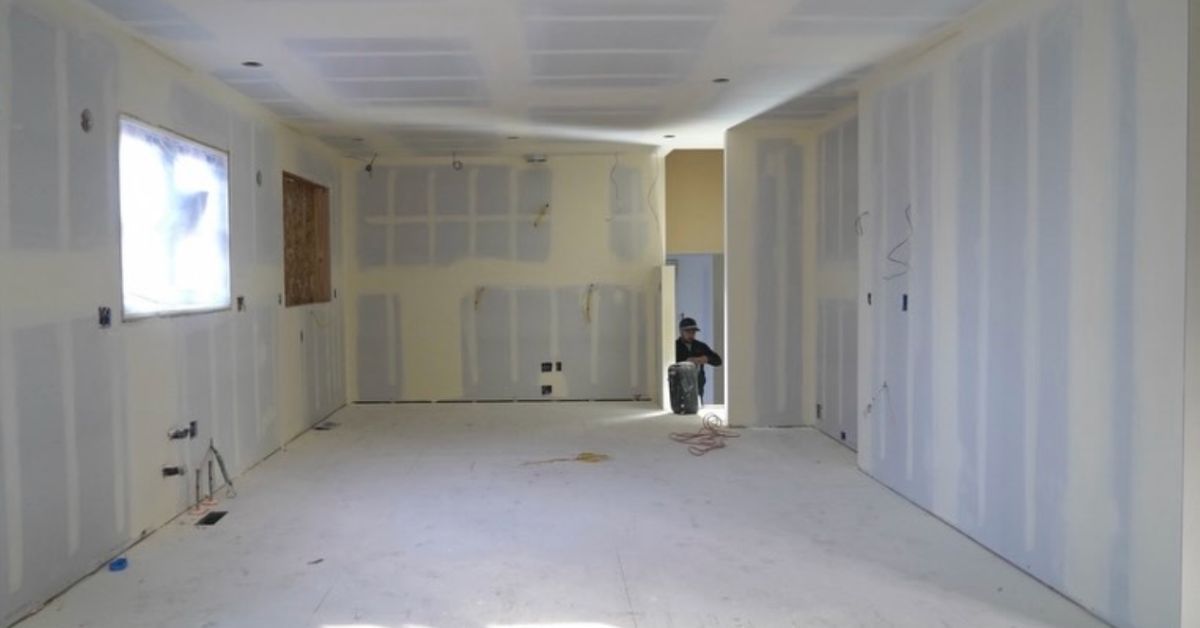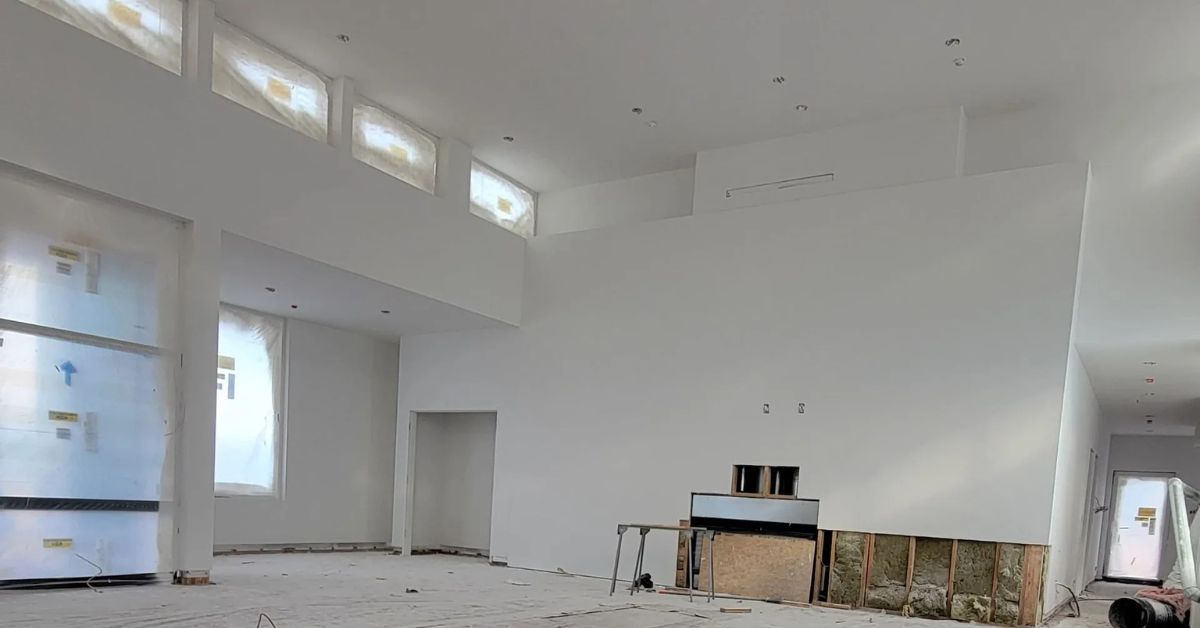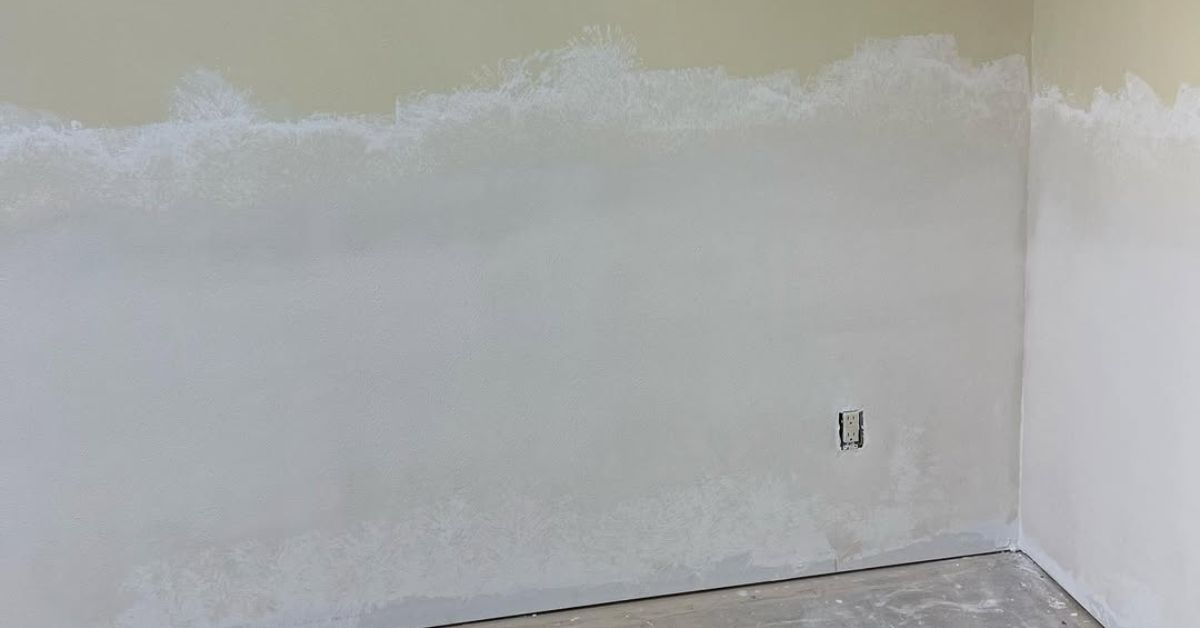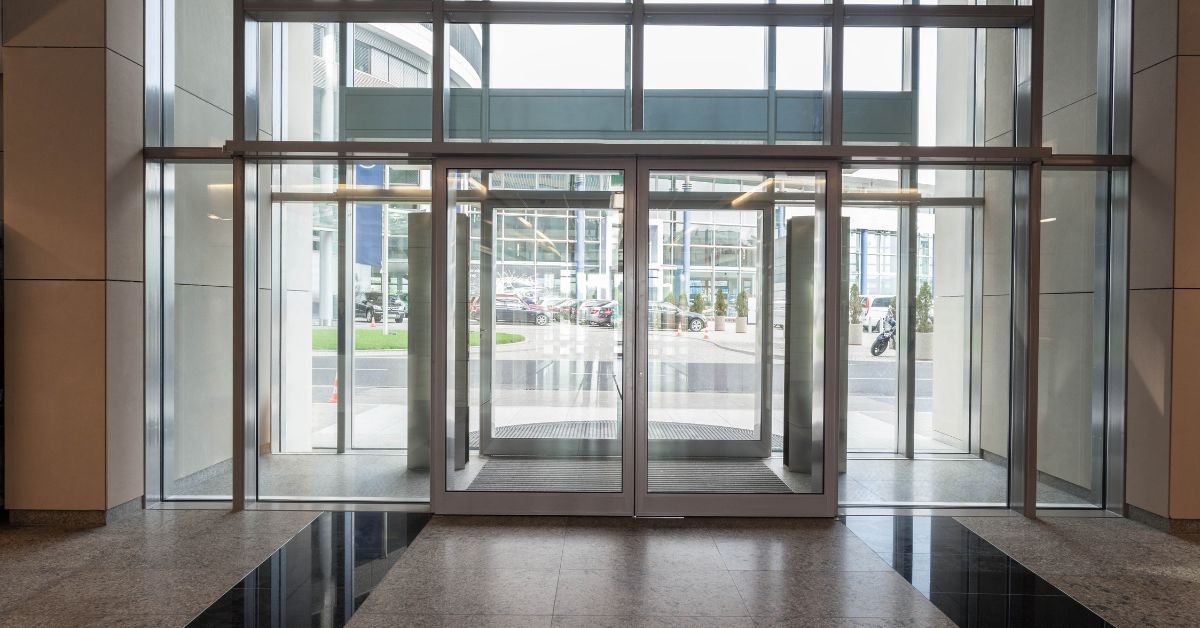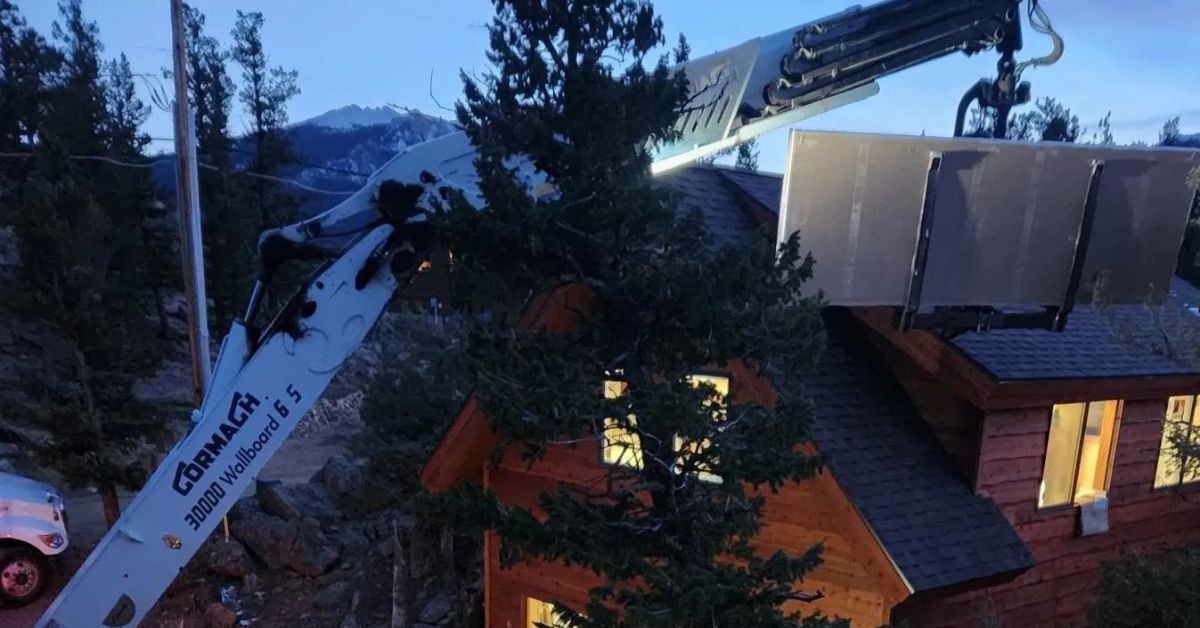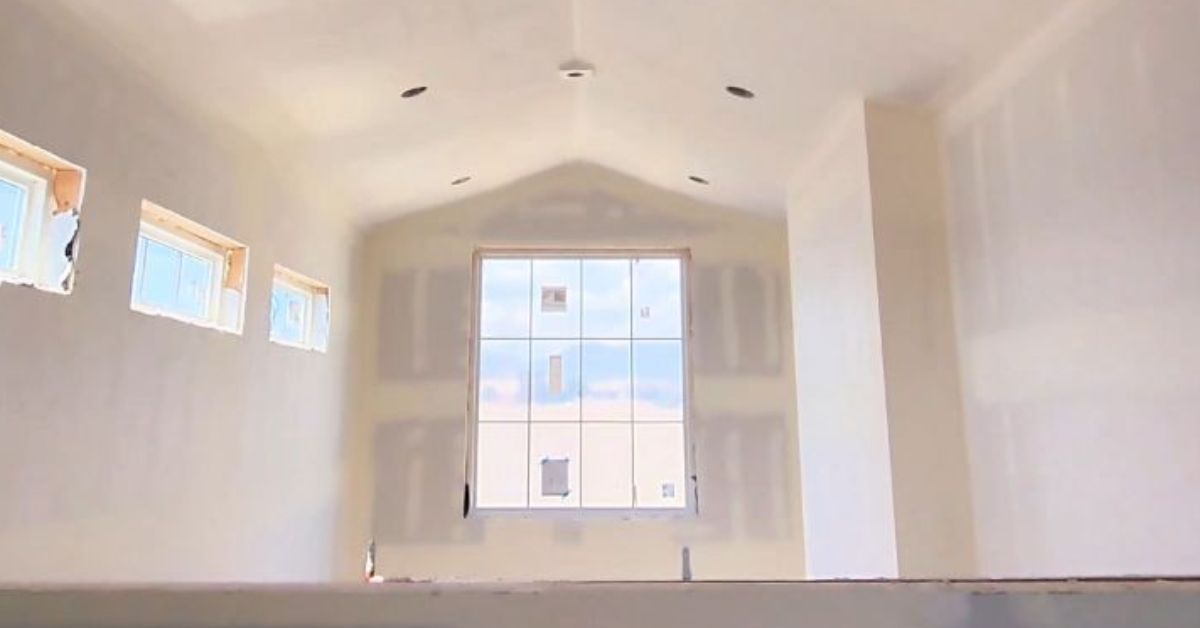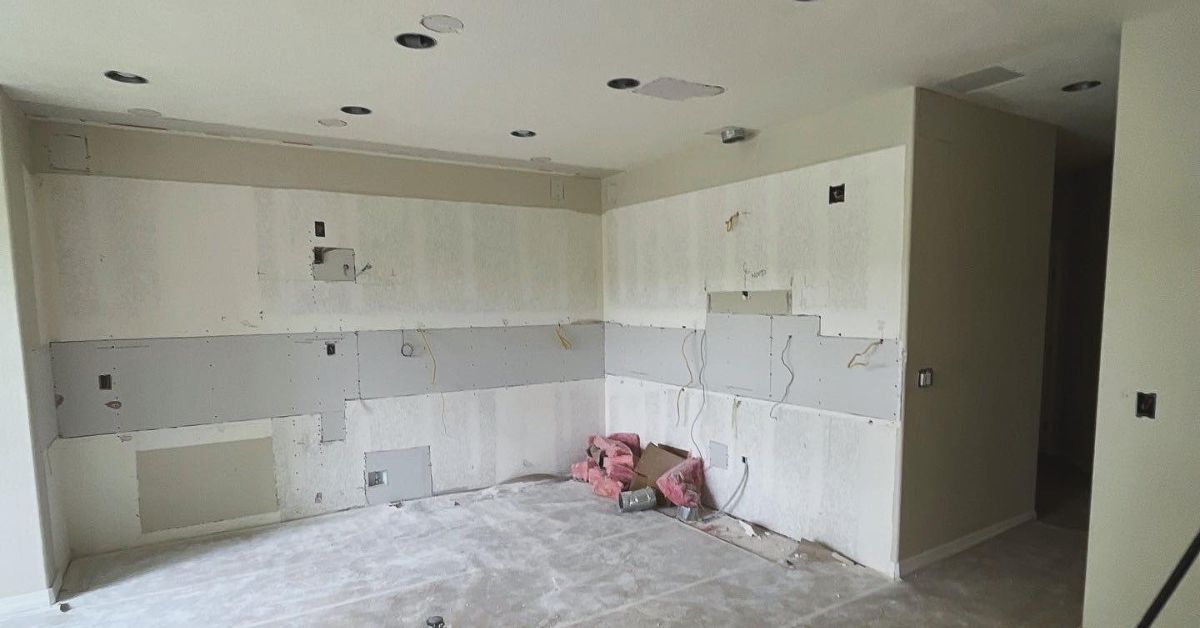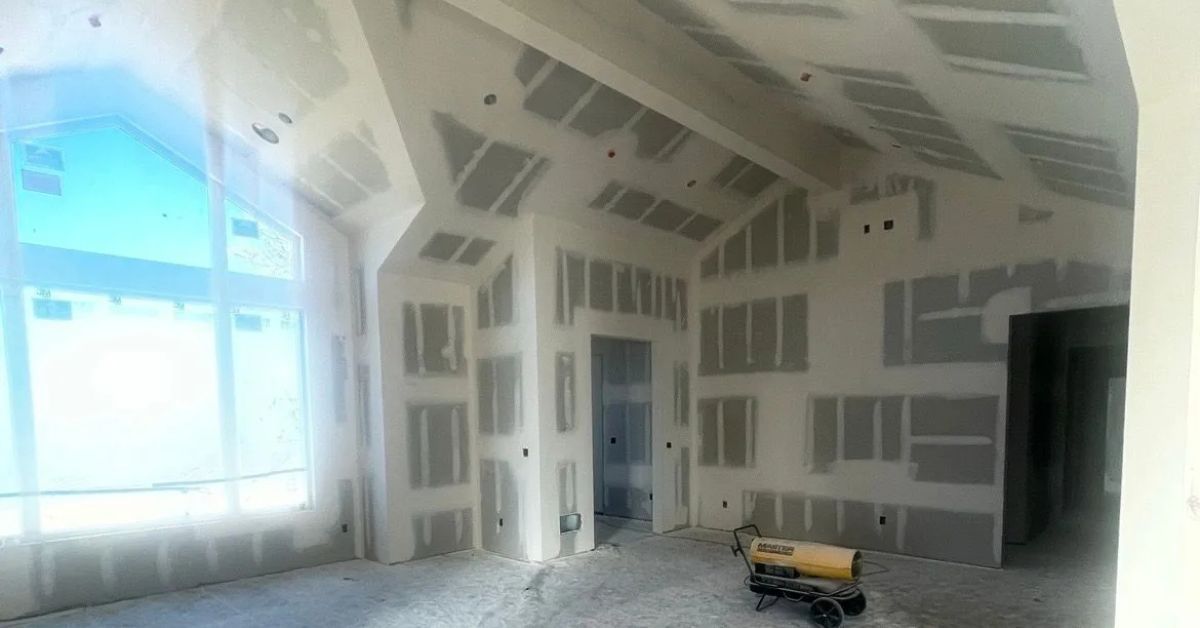Ways To Prepare Your Space for Drywall Installation
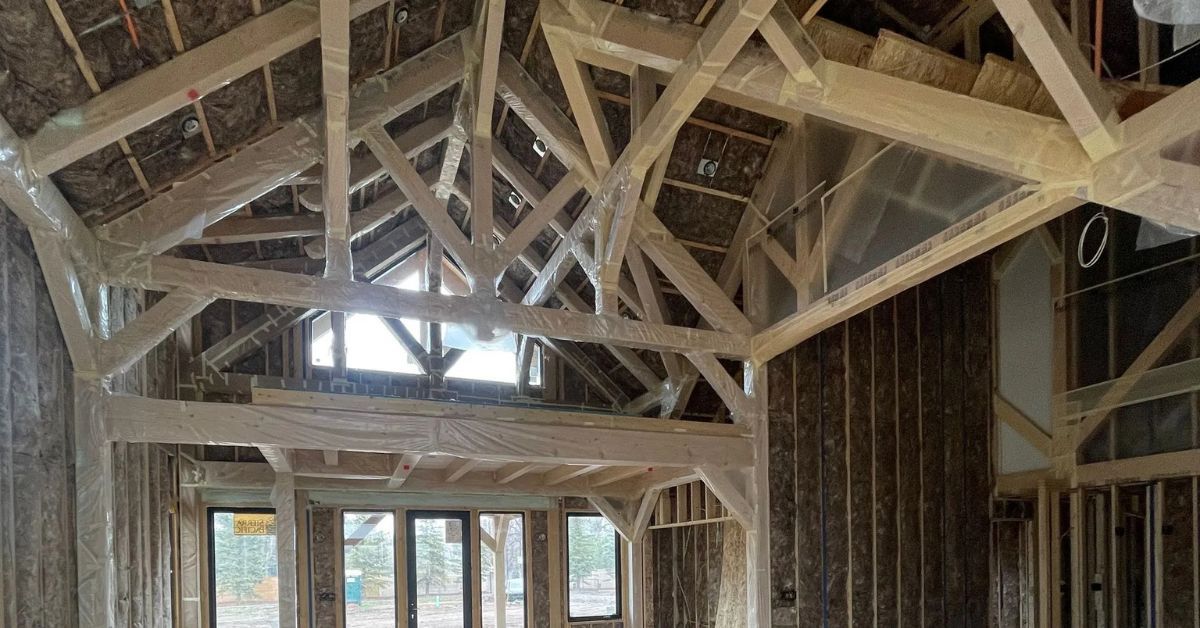
Inspect the Walls
Carefully examine the walls for cracks, holes, or other imperfections that could affect the drywall installation. Even small flaws can cause uneven surfaces or weak spots in the drywall.
Use filler to patch up holes and cracks. Sand the surface thoroughly to ensure it’s smooth and even. Taking the time to prep the walls will result in a polished, professional finish.
Measure the Materials Accurately
As the saying goes, measure twice, cut once. Accurate measurements are a cornerstone of any construction project. Using measuring tape, measure the walls and ceiling dimensions to determine the exact amount of drywall you’ll need.
Be sure to account for additional cuts around windows, doors, and other architectural details. This step ensures you purchase the right amount of materials and minimizes waste.
Buy the Right Tools
Having the proper tools on hand can make all the difference in your drywall project. Invest in high-quality tools like a utility knife, T-square, drywall saw, and taping knife to make precise cuts and achieve smooth seams.
Don’t forget a sturdy ladder or step stool for working on higher areas, as well as a drywall lift for easy handling of large sheets. The right tools will save you time, reduce frustration, and deliver better results.
Consider Soundproofing Options
If you want to minimize noise transfer between rooms, now is the time to think about soundproofing. Adding materials like insulation batts, sound-dampening mats, or acoustic sealants before installing drywall can greatly reduce noise levels. This is especially beneficial for bedrooms, home offices, and shared walls in multiunit buildings.
Plan for Electrical Outlets
Before hanging drywall, carefully plan the placement of electrical outlets, light switches, and other fixtures like cable connections or recessed lighting. Use a stud finder to locate the framing. Mark the exact locations where you’ll need to cut openings in the drywall.
Double-check measurements to ensure accuracy; a slight miscalculation can result in uneven cuts and misaligned fixtures. Creating these cutouts in advance will save you the hassle of modifying the drywall later, prevent potential damage to the drywall, and ensure a seamless, professional-looking installation. Taking the time to do this properly will also help when wiring the fixtures after the drywall is up.
Consider Insulation Options
Choosing the right type of insulation for your space can improve energy efficiency, comfort, and noise reduction. Popular options include fiberglass batts and spray foam.
Spray foam provides superior sealing and insulation but comes with a high price tag. On the other hand, fiberglass batts are affordable, widely available, and relatively easy to install for DIY projects. It’s important that you carefully evaluate your specific needs to find the insulation option that’s right for you.

Prepare the Ceiling
When preparing for drywall installation, it’s easy to focus solely on the walls, but the ceiling requires just as much attention. A properly prepped and insulated ceiling can significantly improve energy efficiency, prevent drafts, and even enhance soundproofing.
Start by insulating the ceiling area with the same care you apply to the walls, making sure there aren’t any gaps or exposed areas in the insulation. Try to install drywall on the ceiling first before moving to the walls, as this allows for cleaner, more secure seams and ensures a snug fit where the ceiling meets the walls.
Use Adhesive for Strong Holds
For added stability and to prevent common issues like nail pops or sagging, consider using construction adhesive in addition to nails or screws when attaching drywall sheets to the studs. Apply a generous bead of adhesive along the stud surfaces before securing the drywall with screws or nails.
This step creates a stronger bond and reduces the risk of shifting over time, which is especially important for ceilings or high-traffic areas. While it’s an extra step in the installation process, it provides long-term benefits, including a durable finish.
Practice Proper Safety Measures
Always prioritize safety when working with drywall and insulation materials. Handling drywall sheets, cutting openings, and installing insulation can expose you to dust, sharp edges, and harmful particles. Make sure the workspace has ample ventilation. To protect yourself, wear safety gear such as gloves, goggles, and a dust mask or respirator.
Preparing your space for drywall installation might seem overwhelming at first, but with these steps, you can conduct a successful project. From clearing the area and leveling walls to installing vapor barriers and soundproofing, every step plays an important role in achieving a professional and durable result.
With the right preparation and the right team at your side, your drywall will look great and enhance the efficiency and longevity of your home! Let Rival Drywall help. Whether you’re looking for residential or commercial drywall services , we’re here to take care of your space!
An essential step in building or renovating a space is preparing it for drywall insulation. This stage creates a solid foundation for the walls and ceilings, guaranteeing that they are functional and aesthetically pleasing.
Whether you’ve tackled numerous DIY projects in the past or you’re a first-time homeowner just starting out, laying the groundwork is the secret to achieving a long-lasting drywall. It’s important that you know how to prepare your space for drywall installation , so you can sit back and enjoy the professional look it provides for your space!
Clear Out the Area
Before any construction work begins, it’s essential to completely clear out the space where you will install the drywall. Remove all furniture, decor, and other items from the room to create a spacious and clutter-free environment for work. A clear workspace reduces the risk of damage to your belongings and allows you to walk around freely without obstacles. If you can’t move certain items, use protective coverings to shield them from dust and debris.
Protect the Flooring
Drywall installation can get messy, with dust, small particles, and debris spreading across the room. To prevent damage and make cleanup easier, cover your floors with durable materials like drop cloths, plastic sheets, or heavy-duty tarps.
This step is especially important for rooms with delicate flooring, such as hardwood and carpet. Secure the protective covering with tape to keep it in place throughout the process.
Check for Moisture
Before installing drywall, address any existing moisture issues. Moisture can cause long-term damage to drywall, such as mold growth and structural weaknesses.
Carefully inspect the walls and ceiling for visible signs of dampness, water stains, or leaks. If you detect any problems, resolve them first. This may include fixing leaks, improving ventilation, or using a dehumidifier to balance the moisture in the air.

